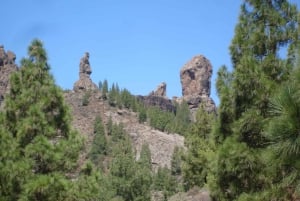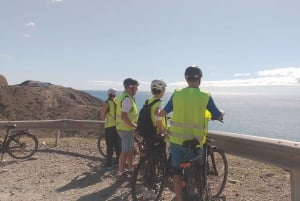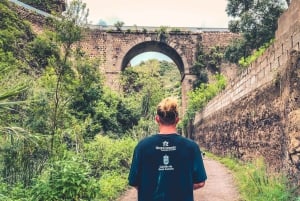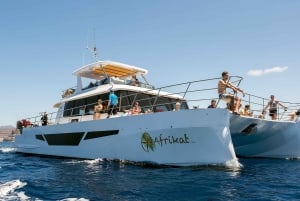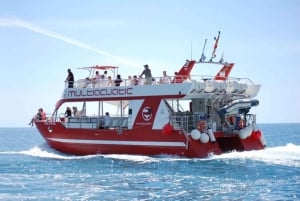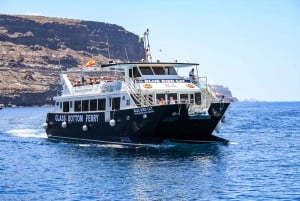Las Palmas de Gran Canaria
Where Historic City meets Golden Beach
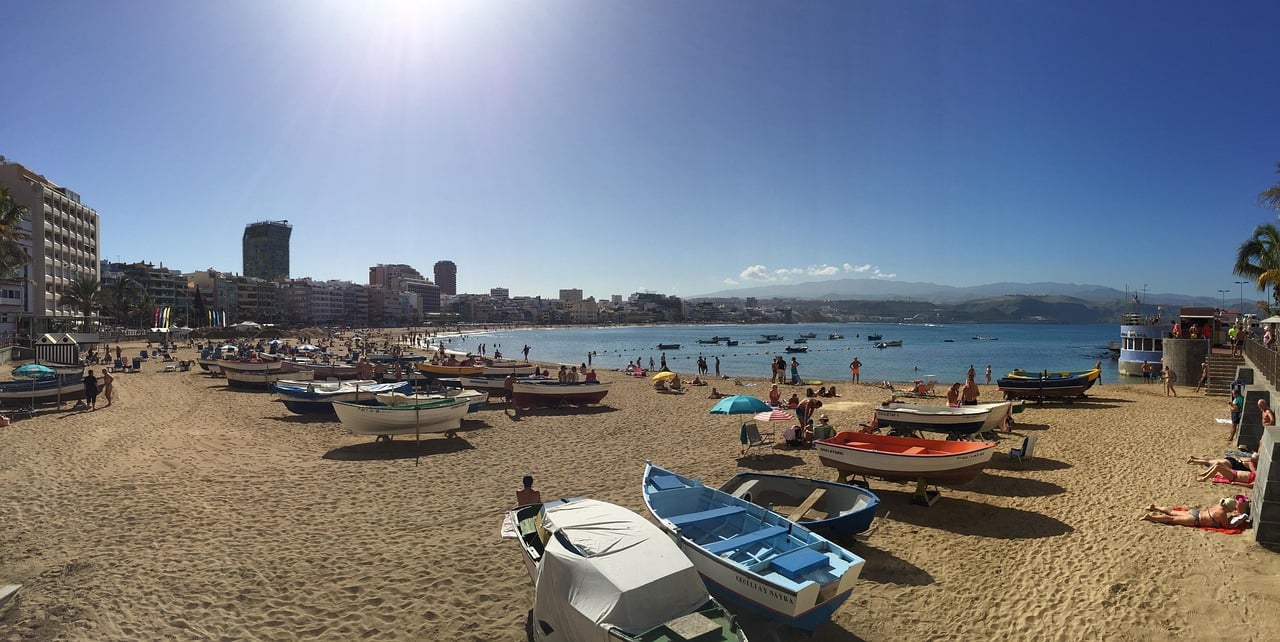 Spain’s ninth-largest city somehow feels more like a laid-back seaside town, albeit one with cruise ships in the harbour and a cathedral older than Shakespeare.
Spain’s ninth-largest city somehow feels more like a laid-back seaside town, albeit one with cruise ships in the harbour and a cathedral older than Shakespeare.Perched on the island’s northeast coast, Gran Canaria’s capital manages to juggle history, shopping, nightlife, and a whopping great beach without breaking a sweat.
Let’s start exploring at the coast, then travel inland.
Las Canteras beach is a 3-kilometre golden sweep of sand protected by a natural reef (La Barra) that calms the waters into a giant open-air swimming pool. Locals jog, surf, and play volleyball here while holidaymakers snooze under parasols. Stroll along the beachfront promenade and you’ll pass ice cream kiosks, surf schools, and the odd busker battling with a trumpet.
It’s the kind of beach that reminds you city life doesn’t always mean grey pavements and packed Tube trains.
Make your way inland to Vegueta, the city’s old quarter, and it’s a different world. Cobbled streets wind past pastel-coloured houses with wooden balconies that creak with character. This is where Christopher Columbus holed up in 1492 while one of his ships was patched up before sailing to the “New World”. The Santa Ana Cathedral dominates the district, a Gothic giant that took centuries to finish. Step inside and you’ll see why, it’s part church, part art gallery. Outside, stone dogs guard the square, looking like they’ve been waiting for walkies for the last hundred years.
For food-lovers, Las Palmas is a dream. In the old town, tapas bars spill onto squares where you can graze on papas arrugadas (salty spuds with mojo sauce), grilled sardines, and ropa vieja (a Canarian stew with shredded meat). Over at Mercado del Puerto food stalls serve everything from oysters to sushi. Order a glass of local wine and see how long you can resist ordering a second plate. And don’t miss churros con chocolate for breakfast in one of the cafés off Triana, the Spanish answer to a fry-up, but stickier and twice as satisfying.
Fashionistas in need of retail therapy head to the main shopping drag of Calle Triana for fashion boutiques, shoe shops, and high-street names. For more designer labels and department stores, the area around Mesa y López is the place to go. Looking for a bargain? Then pop over to Las Arenas shopping centre at the end of Las Canteras, where you can buy anything from electronics to a parrot-shaped pool float.
Culture vultures should head to the Alfredo Kraus Auditorium at the end of Las Canteras for concerts ranging from opera to jazz. The city’s museums are a treat too. The Museo Canario dives into the island’s pre-Hispanic past, complete with skulls and mummies that give the Egyptians a run for their money. Take a nose around the Casa de Colón museum and you’ll discover models of Columbus’ ships and maps that look like they were sketched on the back of a napkin.
And when the sun goes down, Las Palmas doesn’t snooze. The port area buzzes with bars, Vegueta hums with tapas trails, and in summer the beach itself becomes a stage for open-air concerts. The nightlife here is more “cosmopolitan chic” than “stag do in sombreros”, though you can still find a late-night bar serving cheap cañas if that’s your style.
If you’re staying a while, Las Palmas makes a great base for exploring the rest of Gran Canaria. The rugged north coast, dotted with natural pools, is within easy reach. Drive south and you’ll hit the famous dunes of Maspalomas. Or stay local and climb up to the Bandama Caldera, a volcanic crater with views that stretch across the island.
A cliché for sure, but Las Palmas really is a city of contrasts. Beach and business, tapas and tradition, history and high-rises. It’s the kind of place where you can spend the morning exploring 15th-century alleys, the afternoon snorkelling in turquoise waters, and the evening sipping cocktails while watching the sun sink into the Atlantic. It’s big, bold, and buzzing, but still Canarian at heart.



